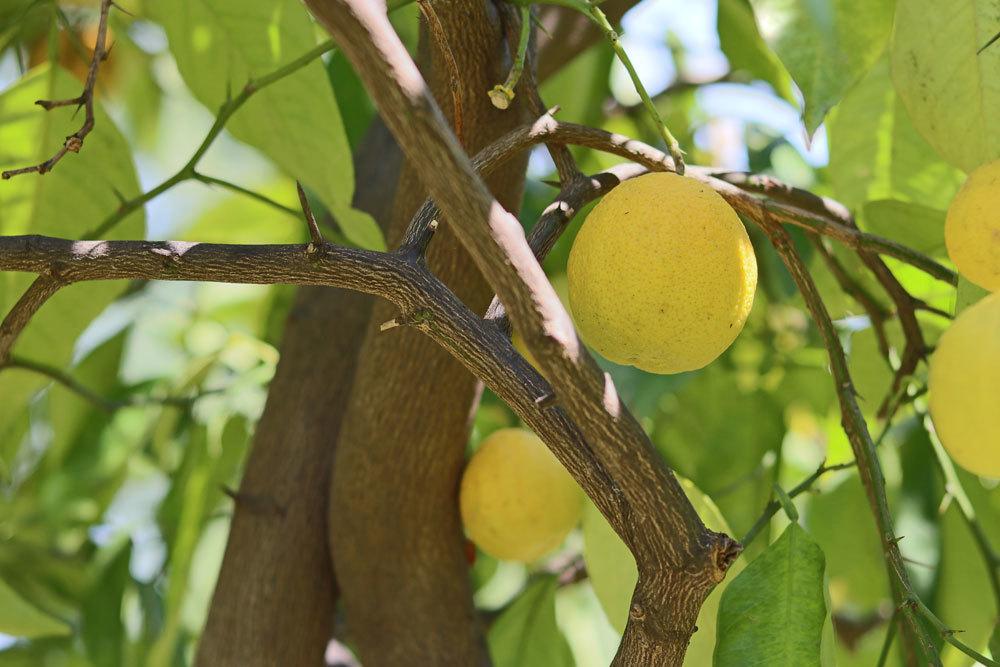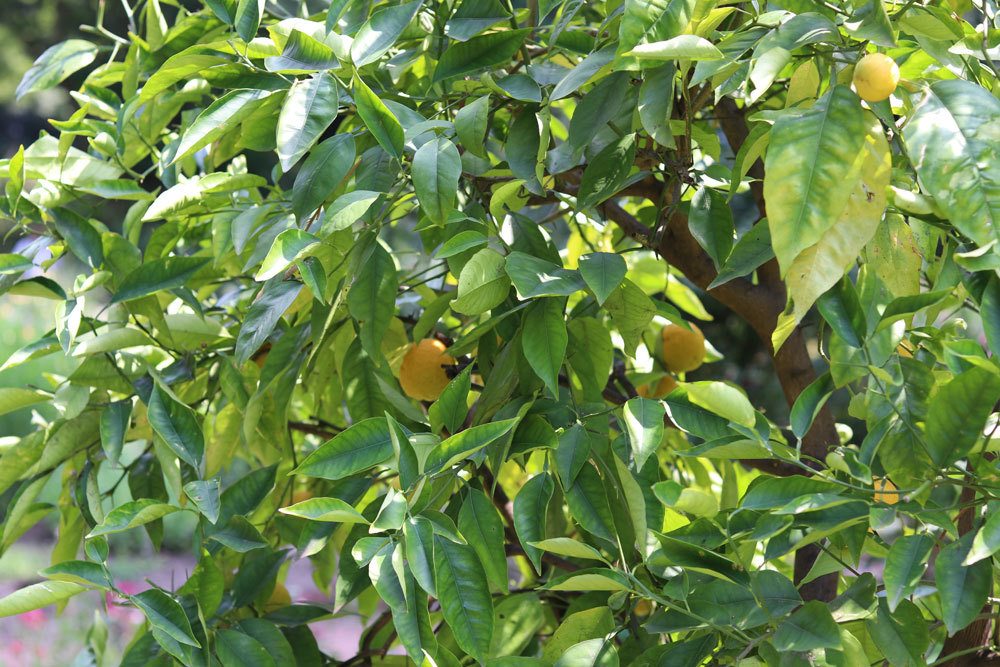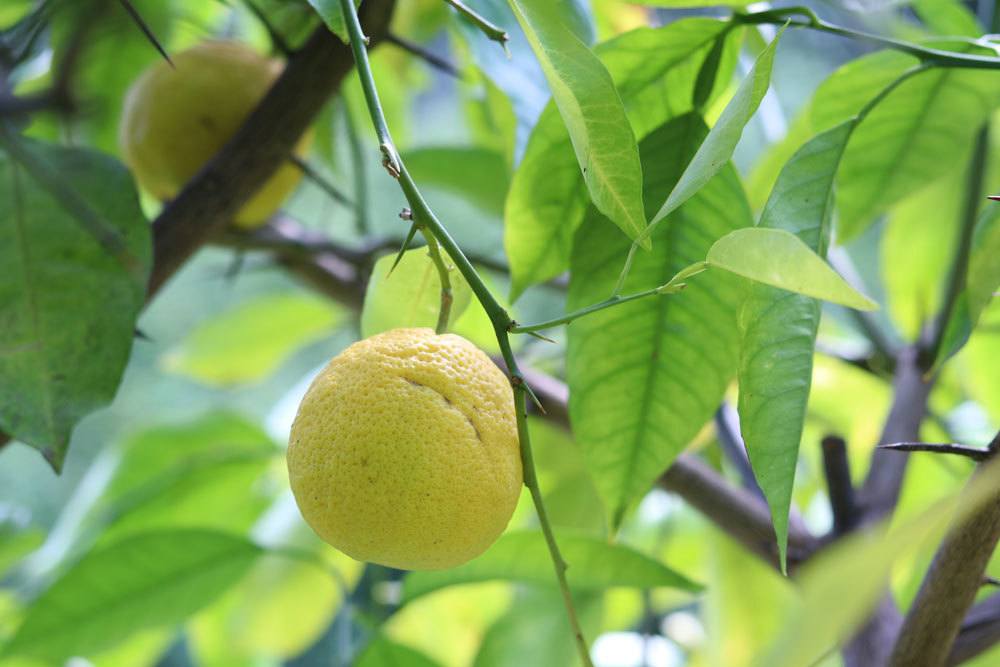Cultivation of a lemon tree is not complicated. However, various factors must be taken into account in order to optimally care for the plants from the rue family. With citrus plants, terraces and winter gardens can be transformed into Mediterranean oases. A large number of passionate gardeners have discovered their passion for the exotic plants. All the more annoying when, despite painstaking care measures, you discover noticeable characteristics such as brown discoloration and black spots on the leaves.
Contents
Black discolorations
The culprit of black discoloration
A black coating on the leaves of the lemon tree is not due to a maintenance error or an incorrect location. Sooty fungi are responsible for the noticeable dark discolorations. And the fungal pathogen does not come alone. Coating and staining are an unwelcome accompaniment of aphids and mites. The sugary excretions of these insects, honeydew, is an ideal base for the pathogen. Among gardeners, the fungus is also known as star sooty mold, black mold and black spot disease. Houseplants and garden plants are equally affected by the disease.
Characteristic of the fungal pathogen are the star-shaped spots that cover the foliage of the plants. Within a short time, the sooty mold spreads over a large area on the affected leaves. The photosynthetic performance of the lemon tree is impaired.
The plant is no longer able to carry out its vital metabolism without hindrance. If left untreated, the disease in its advanced stage can lead to the death of the infected plants and spread massively in the garden or room to other plants. Unlike other fungal pathogens, sooty mold only attacks the outer plant tissue.

The symptoms of black fungus itself can be easily eliminated. For example, by removing the affected parts of the plant or a special fungicide from the specialized trade. Control should not be limited to the sooty mold alone, but should be directly related to the removal of the pests. As long as the pathogen finds an ideal breeding ground on the plants, the black discolorations on the leaves will not disappear and will recur again and again. To initiate the right measures against black spot disease and the unwelcome lodger, you should first determine the type of pest.
- Fighting pests
- Aphids
Eliminate aphids from the citrus tree
With over 3000 different species worldwide, Aphidoidea are among the world’s best-known pest species. The color variety of the small crawlers varies, but not the way they feed. With their small mouthparts, the insects penetrate the leathery surface of the lemon tree leaves. In this way, the voracious contemporaries extract the lifeblood from the plant.
The following are typical signs of aphids:
- sticky plant parts
- brown discoloration on the foliage
- leaves wither

The sticky excretion of insects on the lemon tree is almost always the first clue that the gardener notices in an infestation of aphids. In many cases, the culprits sit on shoot axils and on the underside of the leaves of lemon trees. These simple “home remedies” have proven effective in controlling aphids.
- wipe the underside of the leaves with a cloth
- water with a broth made from nettles or field horsetail
- spray diluted nettle broth on the infested areas
- apply pheromone traps
Animal predators, such as lacewing larvae and ladybugs, help in their own way to eliminate the pests. A natural environment with numerous hiding places is gratefully accepted by the little helpers. For faster results, eggs and adult insects can be purchased directly from specialty stores. This is especially recommended for outdoor plants. Aphids rarely come alone. If there is a heavy ant population, these insects should also be controlled.
Get rid of mealybugs and scale insects
Brown spots on lemon tree leaves may indicate scale insects. Beneath the hard shell of female specimens, the next generation of damaging insects lies dormant in the form of eggs and larvae. Insecticides do not work on scale insects, the animals develop hereditary resistance to the aggressive agents in a short time. Despite this fact, you are not powerless against an infestation of scale insects.
- Wipe off leaves and insects with methylated spirit
- remove heavily infested parts of the plant
- regularly spray the citrus tree with nettle broth
A common mistake: to scratch away the shells of scale insects with a fingernail or the tip of a knife. This action spreads the eggs of the insects over a large area of the plant, which makes it difficult to remove them.
Woolly aphids are relatives of scale insects. For their protection, these insects cover themselves with a mealy-looking wax layer. The pests can be easily picked off shoots and leaves by hand. Aphids are sensitive to high humidity. While controlling the pests, it is advisable to relocate the entire plant to a warm location and spray it with a water sprayer several times a day.

Spider mites
Aphids and co are not the only pests whose legacy promotes sooty mold. The small crawlers preferentially attack citrus trees in the winter quarters. Silvery shimmering webs and a sticky plant surface are typical signs of spider mites.
- avoid the immediate vicinity of active heat sources
- do not let citrus tree dry out completely
- increase humidity
You can rid a small citrus tree of the insects with a trick. The following materials are needed for this.
- Wooden sticks
- water sprayer
- transparent foil
With the sticks and the foil, a small greenhouse is built around the plant. The water cannot evaporate under this construction and precipitates as dew on the leaves and shoots. Citrus plants do not suffer any damage with this method. Quite in contrast to the spider mites.
The population of the pests is weakened and can be completely eliminated with the help of pheromone traps and wiping the shoots. Spraying with a strong jet of water in the bathtub or shower has also proved effective. If necessary, the measure should be repeated for the lemon tree.
Preventive measures
With proper technique and patience, sooty mold and pests can be removed from the lemon tree. However, it is possible to minimize the risk of infestation in advance. Healthy lemon trees are rarely affected by diseases and harmful insects.
- properly water and fertilize
- choose a bright location
- Permanently increase humidity by placing water containers on the plants
- avoid the proximity of heaters in the winter quarters
Check leaves and shoots regularly
Especially the last point can effectively help to notice noticeable changes in the plant in time and react to them. In this way, you can prevent the black fungus from spreading unhindered on the Mediterranean citrus plants.


